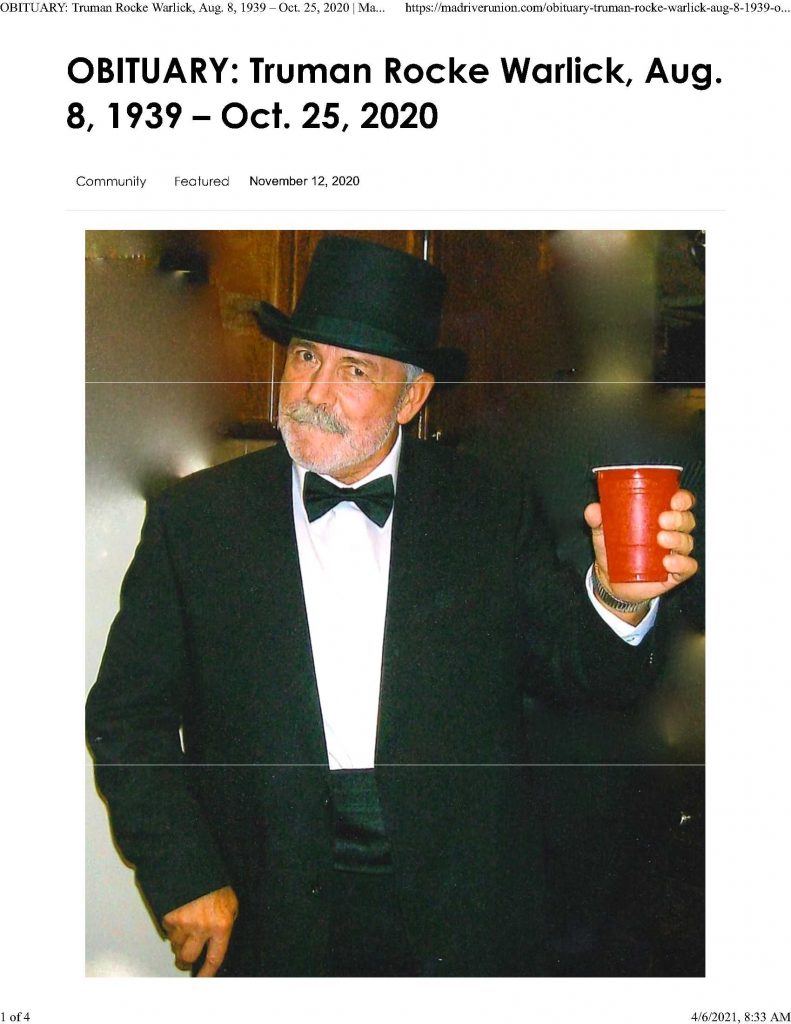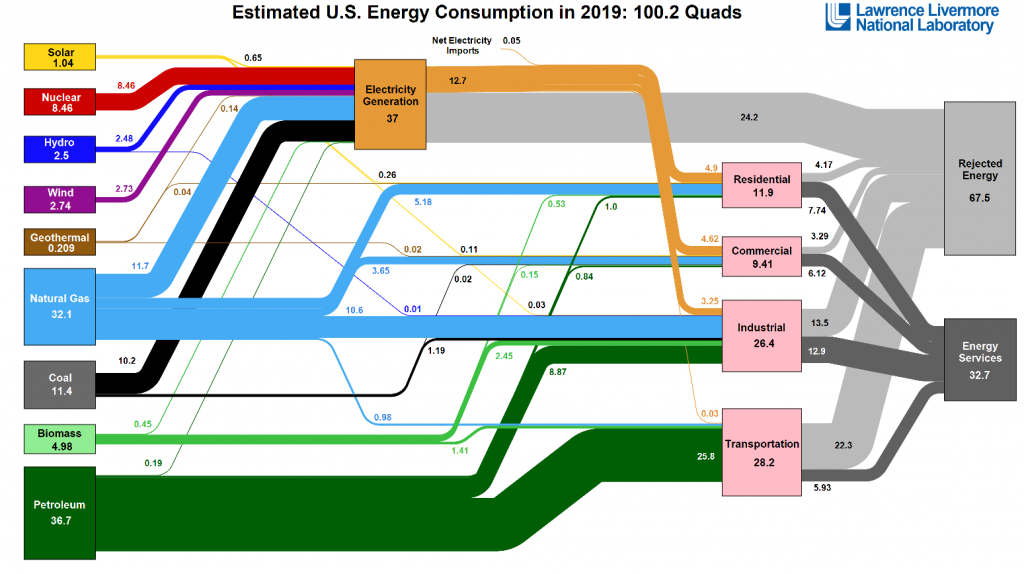The April 2021 issue of Scientific American has a very interesting article discussing the possibility of achieving a sustainable energy system – including the role of natural gas in the future. Michael Webber, the author of the article, begins with the observation that while natural gas is often touted as being the bridge fuel to a zero-carbon future, but if it is a “bridge” it is not part of the long term game plan. His contention is that if we build that bridge, it will be extremely difficult to get off of it. It represents a type of status quo, continuing using existing technologies that continue to burn vast amounts of fossil hydrocarbons, continually adding green house gases in the form of carbon dioxide and methane to the atmosphere. Webber explores opportunities that provide not only a viable bridge, but long term solutions.
Webber’s main focus is on ways to achieve a non-polluting, hydrogen based energy future. He discusses several interesting approaches to obtaining the hydrogen. One source of hydrogen is from anaerobic digesters that use microbes to create methane from organic matter such as crop waste, manure, landfills, and the like. (The reason that carbon dioxide created by burning methane from these sources is that the carbon for plant growth comes from the atmosphere, and just ends up back the atmosphere when it is burned – there is no net increase in the amount of carbon dioxide. It is actually better than not using it because the methane is created in any case when organics breakdown in landfills and such, increasing the amount of methane in the atmosphere, which might be worse than carbon dioxide. What the author fails to point out is that “big industry” often takes these kinds of solutions to the extreme, clear-cutting vast forests that are ground up and fed into industrial digesters. The point is to do this using materials that would normally be waste, creating fuel and organic compost used to enhance agricultural activities. To be effective, it should NOT including cutting down forests for fuel, or planting large crops such as is currently being done with corn to produce ethanol as a fuel additive.
Gas produced by bioreactors can be used in a number of ways including producing electricity for local use or put onto the grid, injecting directly into natural gas pipelines as a substitute for natural gas, or liquefied and shipped to the user by truck or train. While this source of methane is limited, it is currently available and being done globally.
Sources of hydrogen include creating it by electrolysis of water by using electricity produced by sustainable sources such as wind, hydroelectric and solar. It can also be obtained by steam re-forming of methane. Large deposits of hydrogen have been found and can be extracted using wells much like methane. Unfortunately, the existing natural gas distribution pipelines are not suitable for transporting pure hydrogen. There are problems with corrosion, leakage, and energy required to move it through pipelines because of its low density. A solution to this problem is mixing it with methane to reduce, but not eliminate, the amount of carbon in the fuel. It is even possible to pipe methane to the user and reforming it at that location by extracting the carbon from the gas, resulting in hydrogen and carbon powder. (The powder has economic value and can be sold.)
Another interesting possibility for making hydrogen suitable for pipelines is to turn it into ammonia (NH3) by combining it with nitrogen from the atmosphere for transportation and back to hydrogen at the end of the pipeline. Another advantage of using ammonia is that it is liquid at near-ambient conditions and can therefore replace traditional liquid fuels for ships and aircraft.
All of this is very interesting and encouraging because it describes what could truly be a bridge to a hydrogen economy that can eliminate the increase in carbon dioxide and methane levels in the atmosphere (with the added benefit of eliminating the other pollutants associated with burning fossil fuels). The author’s point is that we shouldn’t be thinking of methane as a bridge, but instead move toward a hydrogen and sustainably produced electricity based fuel system.
While this is an interesting approach to a better future, it follows the typical path of assuming a constant (or growing) demand for energy, and the presence of a vast commercial infrastructure that sells energy to the customer. I believe we need to focus much more on reducing our energy demands as a major step toward achieving an “green” energy footprint. The opportunities to conserve in ways that don’t result in reduced utility are astounding. For curiosity, last night I counted the number of LED “indicator lights” glowing in my house. They are on all sorts of devices, from smoke alarms and toothbrushes to televisions and refrigerators. I found 46 of them glowing like a spread out Christmas tree. If each of those little lights uses 1/2 watt of power, the approximately 125 million homes in the USA require the total output of four very large coal burning power plants just to keep those little lights glowing. We could shut down four coal burning power plants just by not including indicator lights in all of these devices. As I have discussed in the past, we can reduce the amount of energy required to condition the air in homes to about 1/3 of the current amounts by various means of “fixing” problems, at an initial cost that is less than the cost of not fixing them (this means “free” to me). Implementing these “free” fixes would cut the country’s energy budget by 5%. Doubling the mileage of cars and trucks would reduce the use of energy by another 15%. Switching to other low efficiency devices in homes can further reduce the demand by 5%. I believe that making energy efficiency a priority can easily reduce the country’s energy use by 50% or more, getting the demand small enough for a zero-carbon approach to be feasible without resorting to solutions such as nuclear power plants. For example, once homes are made more efficient, then making them “net zero” consumers is highly affordable using solar electricity. Combining this with on-site hydrogen production and storage can achieve not just “net zero” energy use, but “off grid” conditions that do not depend upon using the grid at any time except as a means of making a small income by selling excess power to the grid.
I would like to see a big study that researches how much we can reduce the energy demain using techniques that have costs less than the equivalent of 5 years (or some appropriate time period) of energy or at least pays back in less than the product lifetime. These relatively short payback investments result in a lower ownership/use cost for the consumer. Perhaps the government will need to provide some type of zero interest loan to absorb the upfront costs. These loans would be in a “revolving” fund that gets payed by as a fraction of the energy costs that would have been incurred without the improvements.
I think the focus should be on reducing our energy footprint so that we only replace what needs to be replaced. Just because we current use 93 quadrillion BTUs (QUADs) of power does not mean that we will always use that amount. Perhaps we actually only need 30 QUADs to power a more efficient economy. If so, that makes the problem of switching to “green” sources of power much easier considering that we already produce about 11 QUADs, with an addition 8 QUADs of nuclear (that could be the true “bridge” power source that will become smaller as the power plants age and become uneconomic to operate). While coming up with 10 QUADs of new sources of non-carbon fuels will be a challenge, it is not nearly as large as the requirement for 70 QUADs currently envisioned.

